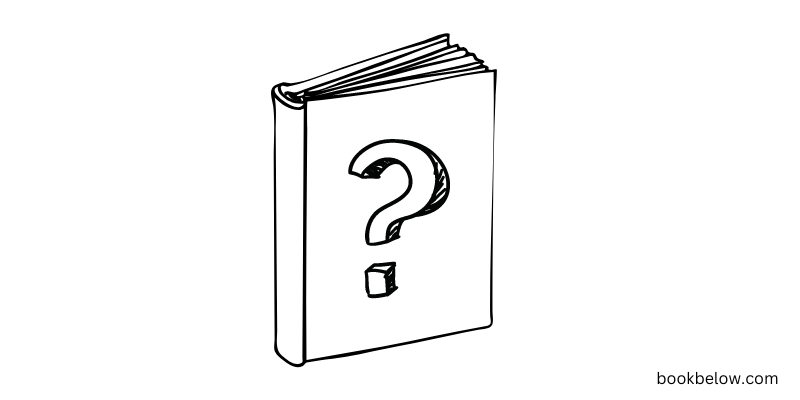

As an author, you know that your book cover plays a crucial role in attracting readers and making your book stand out in a crowded market. But did you know that the colors and images you choose can also impact the emotions your readers feel when they see your book?
The psychology of book covers is a fascinating topic that explores how colors, images, and typography can affect the emotions and perceptions of your target audience. By understanding the psychology of book covers, you can create a cover that resonates with your readers and encourages them to pick up your book.
Color is one of the most important elements of a book cover. Different colors can evoke different emotions and associations, and it's important to choose colors that align with your book's genre, tone, and message. For example:
Red: Red is a bold and attention-grabbing color that is often used to convey passion, excitement, and energy. It can also evoke feelings of danger, anger, and urgency. Red is commonly used in book covers for romance, thrillers, and horror genres.
Blue: Blue is a calming and trustworthy color that is often used to convey stability, loyalty, and professionalism. It can also evoke feelings of sadness, loneliness, and coldness. Blue is commonly used in book covers for non-fiction, business, and mystery genres.
Green: Green is a natural and refreshing color that is often used to convey growth, balance, and harmony. It can also evoke feelings of envy, greed, and sickness. Green is commonly used in book covers for self-help, environmental, and fantasy genres.
Yellow: Yellow is a bright and cheerful color that is often used to convey happiness, optimism, and creativity. It can also evoke feelings of caution, anxiety, and cowardice. Yellow is commonly used in book covers for children's books, memoirs, and humor genres.
Orange: Orange is a warm and energetic color that is often used to convey enthusiasm, excitement, and playfulness. It can also evoke feelings of warning, danger, and aggression. Orange is commonly used in book covers for cookbooks, travel, and sports genres.
Purple: Purple is a luxurious and mysterious color that is often used to convey royalty, spirituality, and creativity. It can also evoke feelings of sadness, nostalgia, and artificiality. Purple is commonly used in book covers for poetry, spirituality, and historical fiction genres.
Black: Black is a powerful and sophisticated color that is often used to convey mystery, sophistication, and elegance. It can also evoke feelings of fear, sadness, and death. Black is commonly used in book covers for thrillers, gothic fiction, and literary fiction genres.
Of course, these associations are not set in stone, and different shades and combinations of colors can convey different emotions and associations. It's important to choose colors that align with your book's genre, tone, and message, and to consider how the colors work together with other elements of your book cover such as images and typography.
Images are another important element of a book cover. They can convey a sense of the book's genre, plot, and characters, and they can also evoke emotions and associations. For example, a dark and ominous image can evoke feelings of suspense and intrigue, while a bright and cheerful image can evoke feelings of happiness and optimism.
Typography is also a crucial element of a book cover. The font you choose can impact the reader's perception of your book's genre, tone, and message. For example, a serif font can convey a sense of tradition and elegance, while a sans-serif font can convey a sense of modernity and simplicity.
When designing your book cover, it's important to consider all of these elements and how they work together to create a cohesive and effective design. You want your book cover to evoke the right emotions and associations for your target audience and entice them to pick up your book.
Here are some tips on how to create a high-quality book cover that stands out:
Hire a professional designer: Unless you have experience in graphic design, it's best to hire a professional designer to create your book cover. A professional designer can ensure that your cover looks polished and appealing, and that it meets industry standards.
Research other book covers in your genre: Look at other book covers in your genre to see what elements they use and how they use them. This can give you inspiration for your own cover and help you avoid common design mistakes.
Choose the right images and fonts: As discussed earlier, the images and fonts you choose can have a big impact on the emotions and perceptions of your target audience. Choose images and fonts that align with your book's genre, tone, and message.
Use high-quality images: If you're using stock photos or illustrations, make sure they are high-quality and resolution. Low-quality images can make your cover look amateurish and unprofessional.
Test your cover: Once you've created your book cover, test it out on potential readers or other authors in your genre. Get feedback on what works and what doesn't, and make adjustments as necessary.
In conclusion, the psychology of book covers is a complex and fascinating topic that can have a big impact on your book's success. By understanding how color, imagery, and typography can evoke emotions and associations, you can create a book cover that resonates with your readers
Help us improve by giving your feedback.
Submit Feedback